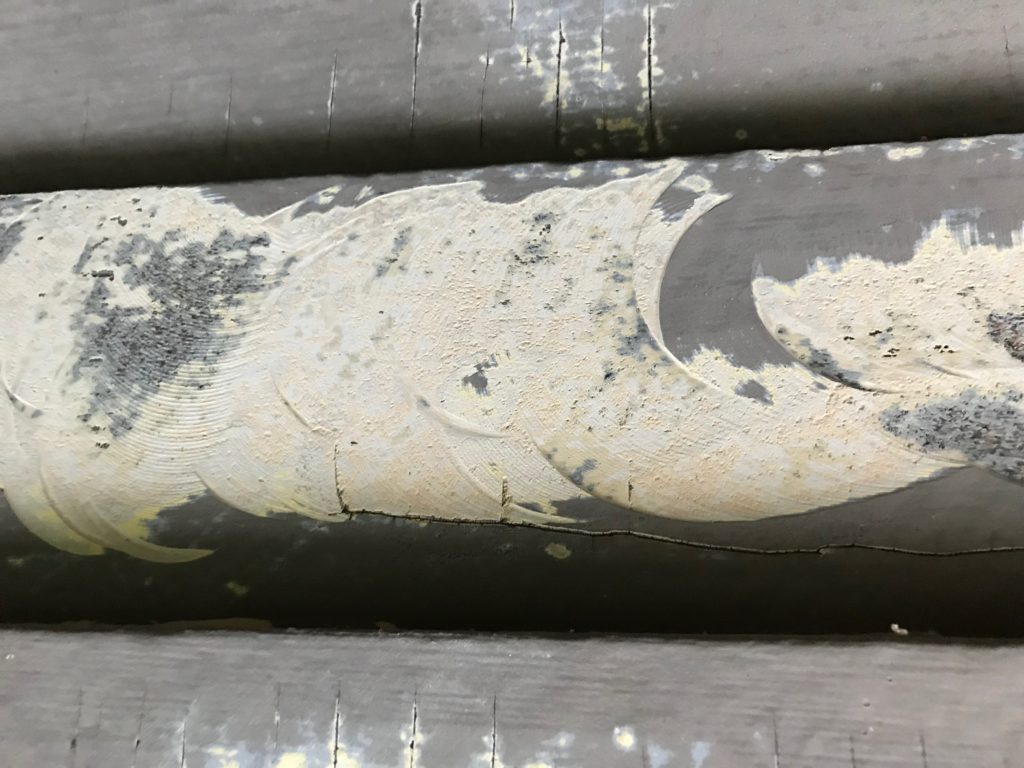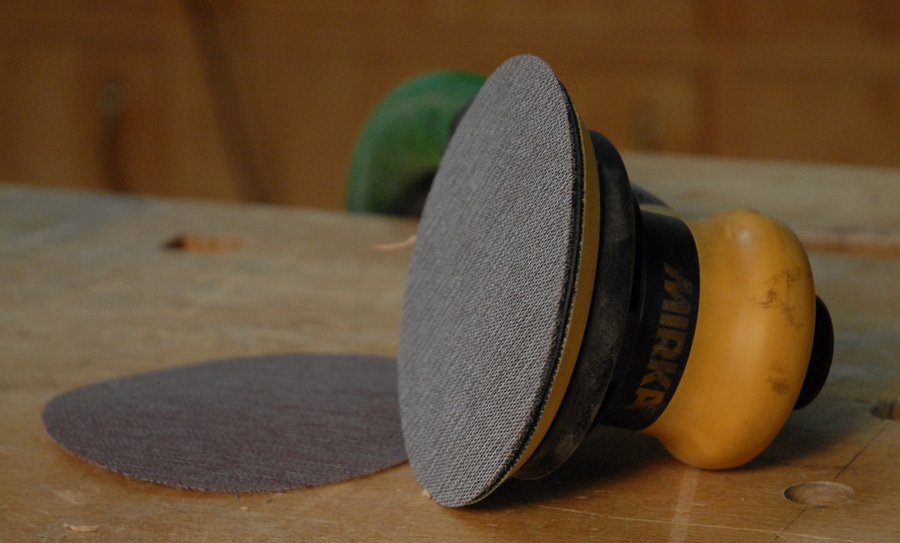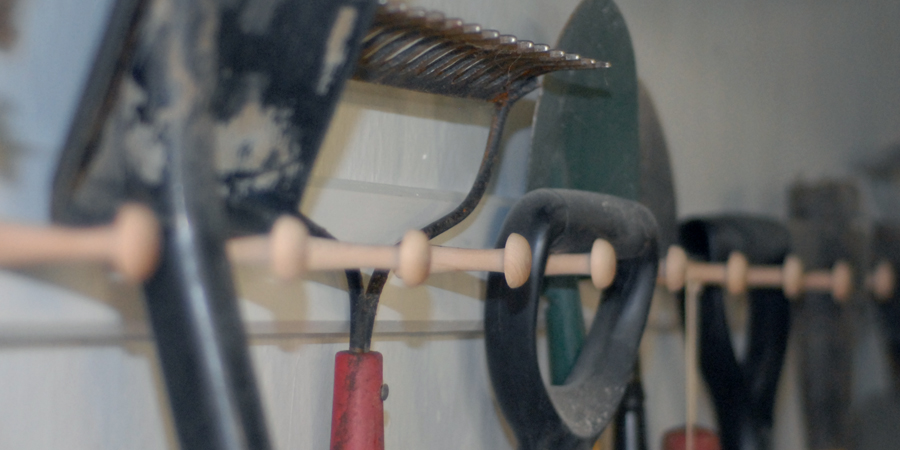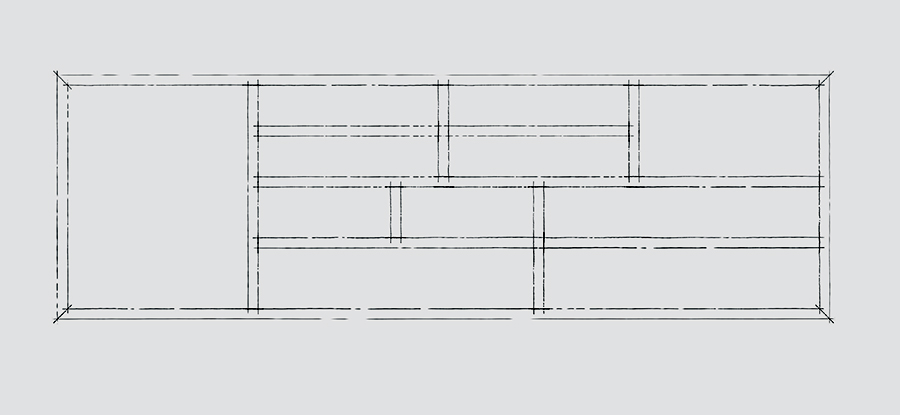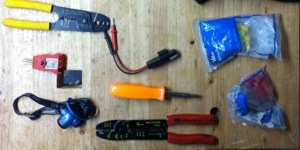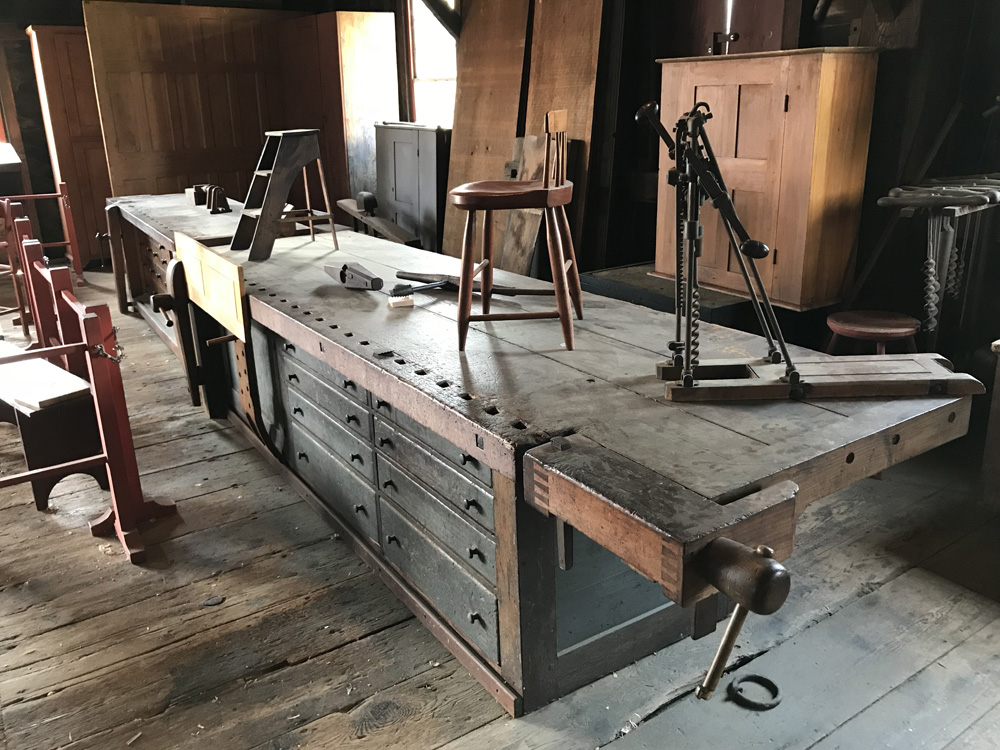
I can imagine a happy retirement volunteering in the cabinet shop at Hancock Shaker Village, if only because it would allow working at one of the shop’s massive workbenches. These benches are typical of the form, with a wide top over a storage base. A tail vise and leg vise (supplemented by a sliding dead man) provide workholding.
My personal bench is a scaled-down version of the Roubo as documented by Christopher Schwarz in an issue of Woodworking Magazine and later in Workbenches: From Design & Theory to Construction & Use. It has served me well, but there are times when I would prefer enclosed storage rather than its single open shelf.


